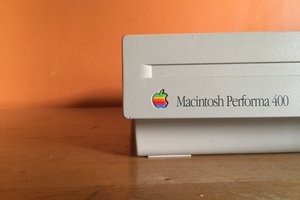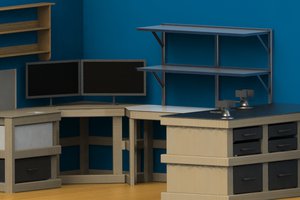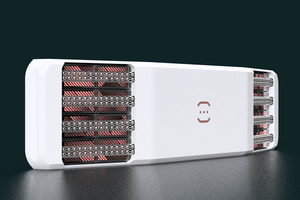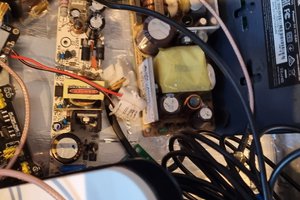The Mighty Quill
I'm tired of not writing. I've been wanting a computer specifically for writing. Time to take care of both at once...
I'm tired of not writing. I've been wanting a computer specifically for writing. Time to take care of both at once...
To make the experience fit your profile, pick a username and tell us what interests you.
We found and based on your interests.
Boy I have just the best luck :(
Dropped my phone in the toilet Saturday. Sunday was my 35th birthday.
I just found out it's gonna be $40 just to have the **** thing looked at, +$50-$80 to get it fixed, and I have $80 for groceries and nothing more till next month :(
Even worse, while this project has had to change because my laptop is starting to act up... which also means it's got to be suspended for a bit...
I have another project I was going to submit for the same contest (Retro Reinvented)... except, guess where all the build photos are? :( :( :( :( :(
Go figure. I could've really used that $200. I didn't think I'd get it, I didn't expect to, but I *wanted* it... I could've really used it. All those 'jellybean' parts that everyone has on hand? I don't have them on hand. I'm on Disability. I have Asperger's and ADD... seems normal, but when I was growing up, "Autism" meant the guy from the "Rain Man" movie and "Asperger's" was an insult involving donkeys, meat patties, and a swear word. So the teachers who are now really good at dealing with folks like me... learned how to do that on me and my classmates. Literally... and I didn't do so well as a result. I live on $1100/mo, roughly, and the second half of the month is hard, because I'm on Disability (international: it works like what you call a pension, but we don't call it that here) and I can't moonlight, which to a point is indeed legal, but I'm not even THAT functional.
So I don't have the money to have standard parts on hand... I never have. I was gonna spend the $200 on that. Now I don't even have a chance... I'm used to not winning contests, sure (not emotional there, just straight-up honest... I won some trinket once in a Halloween thing in college and on the rare occasion that I've bothered to get a $10 scratch-off ticket... the best I've done is $30, and I have a close relative who's got $500+ from them... that's TBH about it) but this honestly kind of stings a bit. I feel like I at least deserved a shot at the prize, and now I don't have that.
Sorry if that gets you down as well... life gets to ya sometimes :-/ that's all.
Ordered the screws online... the fan grills guy doesn't have the 40mm size listed any more (it's an eBay thing) but since they're 3D printed I wrote him and asked. I'll dig through some old stuff I have just to be sure, later, as well.
Alas, my planned outing today got screwed up, so that purchase has been pushed back to Friday.
I also don't feel like doing the piece on VIA CPU history. I think I've done it before anyways... tl;dr the design is a modern descendant of the IDT WinChip, which existed in an era when floating-point mathematics weren't necessarily a required thing (hence the need for a Floating Point Unit aka Math Coprocessor, which nowadays is built into the CPU). The IDT WinChip, simply put, was a budget offering in the era of the Pentium I and competitors, for purposes where floating point operations would be encountered in very, very limited circumstances... it could do them, but not very well -- quite poorly, in fact, even worse than Cyrix's offering (!!), which is quite notable considering Cyrix's integrated FPU arguably bankrupted their company. Hence the marketing for the WinChip... but when the bottom fell out of the Super Socket 7 CPU market, the WinChip died with it. VIA, a 'nothing' Taiwanese company making cheap DRAM chips, saw echoes of AMD in the metaphorical (?) tea leaves and snapped up the WinChip IP... (context: AMD was cranking out memory chips before it bought a license from Intel to second-source their CPUs... and then when it became a reasonable force in the marketplace, the lawyers came out... one big stinking nasty lawsuit later, Intel had a pretty decent competitor!)
A pity, however, that all of VIA's work on updating the design has focused on things like power consumption and supporting newer add-on instruction sets and the like... and not putting a better FPU in the thing! The chips hardly use any power, but still do math like a Fifties Guy with a One Arm Bandit adding machine full of gears... one that hasn't seen a proper oil can since the War. Oh, dear...
You know the part of every bad cartoon movie where the villain rubs his or her hands together and says in a sinister villain-y voice "I have a grand plan!" Yeah, read the title in that voice, please... thanks in advance.
/nervous chuckle
So here's what you CAN'T see from the photo. I kinda intended to put this in the first log but I got to rambling because it was late and I was sleepy and I should have been in bed and wasn't so uhm oops.
The components actually will probably shift around a little bit, because things like the heatsink and ports, hubs, etc, will have cutouts made in the wooden case you can see in the photo for them. The power supply stuff will be in the silver can on the left -- actually a MainStays brand "utensil holder" (international: "cutlery basket" or something like that) from Walmart! -- probably a pair of power bricks. I have a 5v 6a brick and a 12v 3.33a brick. Probably they'll both go in... along with some glowy lights I have from Dollar Tree, what we in the US call "fairy lights" (international: not holiday/Christmas lights, these are the very thin strings of tiny enamel wires with surface-mount LEDs glommed on with hot-snot glue every so often... sorry, IDK what you call those over there). I also have some special paper to stuff in there, and the cutlery holder will get painted satin black. There will be some kind of steampunky tubing in between the holder and the wood box but I've not worked that part out yet.
Also, the wood box needs to be a lot deeper. I'm going to do that a cheap but kinda crappy way. Walmart here sells a 97¢ package of paint-stirring sticks... three sticks to a package! I'm going to buy four packages, along with some tiny wood screws (brass ones if I can get em). I have TWO ROLLS of woodgrain contact paper (basically paper 'wood veneer' like you see on the furniture you get at discount stores) and I'm going to use part of one here. Two paint sticks, cut to length, stack to provide depth, and one on the inside couples them together with bolts. Woodgrain contact paper for looks on the cheap.
The front bezel will be a picture frame that I bought, that I'll mask to hide the guts of the system since the LCD is smaller than the frame. The front panel thing will look a bit like a tombstone, flat on the bottom and round at the top, with two USB ports in it. The original point of the second LED hole was for an HDD activity light (back when platter drives were a thing) but the system board doesn't have that... it does, however, have a two-pin bicolor power LED (orange/green), the kind where if you reverse the polarity you get a different color. I'm going to wire it so that the 'green' side lights up the power button (a light-up doorbell button to which I've rigged a warm-white 3mm LED) but the 'orange' side lights up the red LED in the secondary spot.
I also have really nice, cool fan grills for the two 40mm fans, but I need to order more because I can only find one of them RN. Yay. I'm gonna go dig in a couple boxes first, just to be sure.
Yeah, I *know* I promised a different project log today. I'll do that later. Maybe. Maybe it'll be tomorrow. I don't get to Walmart till Wednesday.
My pal Jody says -- "Take it easy!" Whatever.
The one picture you can see is the prototype layout, done with a motherboard that is the right kind but doesn't work -- one, it has memory controller issues and beeps at startup about some sort of video error thing, and two, Wyse put some surface-mount components on the underside of the board very stupidly close to the mounting holes for the heatsink... of which not all are now present because I am clumsy ;)
Speaking of which, a better heatsink has been ordered, and I've also ordered the right bezel/holder for the LED that is sitting next to the "front panel" unit there... which I had long ago but don't any more. The dude who made me that front panel thingy plate did so back around the time I was in college, ten to twelve years ago (hey, jojo69, you still out there? -- no, I know him from somewhere else -- well, if you see this, I guess you'll be happy about it, I'm FINALLY using the dang thing!). It's actually made for the style of LED clip-holder that Radio Shack sold back in the day. A badly overpriced pack of ten is on its way from eBay because I didn't want to wait a month for a thousand to come in an awful ziploc from China.
The mobo is from an unusual sort of system called a "thin client", which is the modern evolution of the RS-232 serial terminals they had in the 1970s such as the Wyse 50, which were essentially video and keyboard controllers that worked over long RS-232 ( "COMport" for those too used to modern IBM PC nomenclature :P ) links with a central mainframe or minicomputer. The idea is to do as little actual computation on the system proper, offloading as much as possible to a server elsewhere via Microsoft's RDP protocol and a LAN connection.
This particular thin client is a Wyse Cx0 series model. This is a design that, externally, is about the size of a mass-market paperback, and contains a VIA Eden CPU running at all of 1.0GHz, generally either 512megs or 1gb of RAM, and an IDE-based compact SSD in the "Disk on Module" form factor, which in the particular subset of nerd vernacular peculiar to thin client manufacturers, marketeers, and salesmen, "Flash" -- for no discernible reason whatsoever because literally the entire rest of the PC industry would call that an SSD.
I am unusually familiar with the Wyse Cx0 series clients because of https://bugs.freedesktop.org/show_bug.cgi?id=91966 (warning, reads like a novel because length) -- they use a *highly* unusual chipset. This whole system reads like it was designed using a VIA reference schematic (quite possible, though I've no evidence for this except that it uses VIA **EVERYTHING** inside it except for a few spots where common industry names that usually pop up next to VIA parts appear -- Realtek network chips, SST for the BIOS ROM, etc. No Realtek *audio* here, though; that's done by VIA's internal chipset stuff -- as is video, annoyingly, which is one of the peculiar quirks of the VIA VX855 chipset it uses.
This chipset is *incredibly* unusual, to say the least. As far as I'm aware, there are exactly FOUR such clients which use that chipset -- the Clientron U720 (which is often rebadged, one particular notable example of which is the Dell Optiplex FX130... and a lesser notable example, the 10ZiG RBT-400 series and later (?) 5500 series -- 10ZiG is formerly known as BOSSaNOVA, BTW, and Clientron is formerly Bcom) is one, the Cisco VXC-2111/2112/2212 series is another, the IGEL D210 is the third, and the Netvoyager LX1014 is the fourth and final model. (These were listed out with the help of the "ParkyTowers" website, a sort of database of sorts of info on many common thin client models. The page there for the Wyse Cx0 series is https://www.parkytowers.me.uk/thin/wyse/cx0/ if you want to give it a look.) Video support in Linux is through the X[dot]Org system driver called "openchrome" (after the fact that VIA named their graphics subsystems "Chrome" *long* before Google had the idea of making a browser of...
Read more »
Create an account to leave a comment. Already have an account? Log In.
Become a member to follow this project and never miss any updates

 Tawez
Tawez

 kelvinA
kelvinA
 neohackerjd
neohackerjd